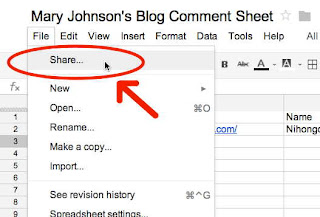きょうはオーラルしけんです。
Please do today's activities (3 activities as follows) before and after you take the oral exam.
1. Read the revised version of Blog Evaluation Categories Fall 2013
2. Check and respond to the comments on the blogs. (20 minutes)
- Click HERE and read the revised version of Blog Evaluation Categories for Fall 2013. You will evaluate each other's blog at the end of the semester based on these evaluation categories.
2. Check and respond to the comments on the blogs. (20 minutes)
- Check the comments others posted on your blog, and also check if others responded to the comments you have posted on their blogs.
- Respond to any questions or comments.
- If you haven't created a comment sheet, please create one in order to keep a record of your comments so that you can share it with your instructor.
- Also, keep a record of where you have commented on your comment sheet. (On the comment sheet, please make sure to put the URLs of the blogs where you post comments.)
3. Write on your own blog. (15 minutes)
- Write on your blog in Japanese.
- The topic can be anything. If you don’t have any ideas, write about what you did during last weekend and how it was.










